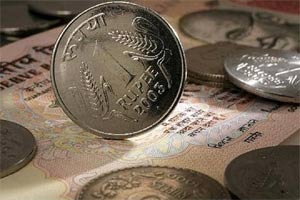
Even as the rupee declined for the sixth consecutive session and China announced a second cut in yuan on Wednesday, economists are of the view that these currency fluctuations are unlikely to have a significant impact on India’s export. However, they agreed that the devaluation of yuan will have some adverse impact on the exports.
With rupee being one of the strongest currencies over the last few months, India has seen a decline in its exports, which fell for the seventh straight month in June, contracting 15.82 per cent year-on-year. An analysis of the performance of major currencies in the last one year shows that Indian rupee depreciated only 5.8 per cent vis-a-vis US dollar during the period while Russian rouble depreciated 44.6 per cent, Brazilian real depreciated 34.3 per cent and Euro depreciated 16.7 per cent against US dollar. Owing to this, economists said, Indian exports lost competitive edge in global market.
“Fluctuation in the currency does not impact our exports significantly. But exchange rates have to be viewed vis-a-vis competitors. We have lost competitive edge due to significant depreciation in other currencies over the last one year. It is definitely a challenge. Due to currency fluctuation, cost of hedging has also gone up substantially so exporters need to work out their strategy and cut costs to make up for loss,” Ajay Sahai, director general of Federation of Indian Export Organisations told The Indian Express.
However, he emphasised that historically there is no co-relation between growth of exports and rupee depreciation. Growth in exports, he argued, is almost always a function of global demand. Early during the day, reacting to China’s move, Chief Economic Advisor Arvind Subramanian called on to policymakers across the world, including India, to take notice of the development. “China has done two things — it has devalued its currency as a measure aimed at reducing the spread between the offshore and the onshore rates and is based on an IMF recommendation. This action is both an endeavour to make their yuan a more plausible credible candidate for inclusion in the SDR basket. There is no doubt that China is responding to its own internal development of slowing down of growth and exports in order to give its economy a boost,” he said.
Exporters are worried that the move of China may not be a one-off affair and more steps may be in the offing. With Euorpe, Asia and, to some extent, Africa being highly price-sensitive markets for Indian exports, it is to these markets that the exporters are worried about losing their edge. When asked about the quantum of impact of one per cent rupee depreciation on exports, Sahai said that it comes to an advantage of roughly around 0.3 per cent, though there are no studies to prove it. However, DK Joshi, chief economist, Crisil, said that devaluation of Chinese currency will not have any significant impact given the fact that currency fluctuation is only a small factor in growth of exports. “The exports have lost competitive edge due to non-price factors such as general competitiveness of economy, infrastructure and logistics etc. Also, the export markets of India are not doing well,” he said.
From October onwards there may be some improvement in exports “with firming up of agriculture commodities and metals likely to follow the path,” Sahai said.
